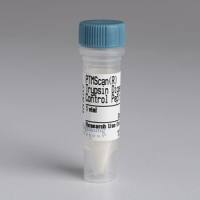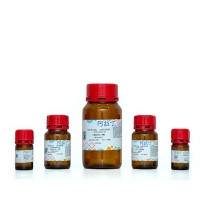Short-range fluorescence quenching has proven to be an effective method to detect the presence of coexisting ordered and disordered
state lipid domains in model membranes. In this approach a fluorescent group and fluorescence-quenching molecule are incorporated
into the lipid bilayer of interest. In a typical experiment, the fluorophore chosen partitions into ordered domains to a significant
degree, whereas the quencher partitions more favorably into disordered domains. Thus, in the presence of lipid mixtures forming
coexisting ordered and disordered domains, fluorophore and quencher segregate so that fluorescence intensity is much stronger
than in homogeneous lipid bilayers lacking separate domains. The small nitroxide-labeled molecule tempo (2,2,6,6 tetramethylpiperidine-1-oxyl)
is a useful quencher for such experiments. Protocols for using tempo to detect ordered domains and ordered domain thermal
stability are described. The advantages and disadvantages of use of tempo as opposed to nitroxide-labeled lipids are also
described.






